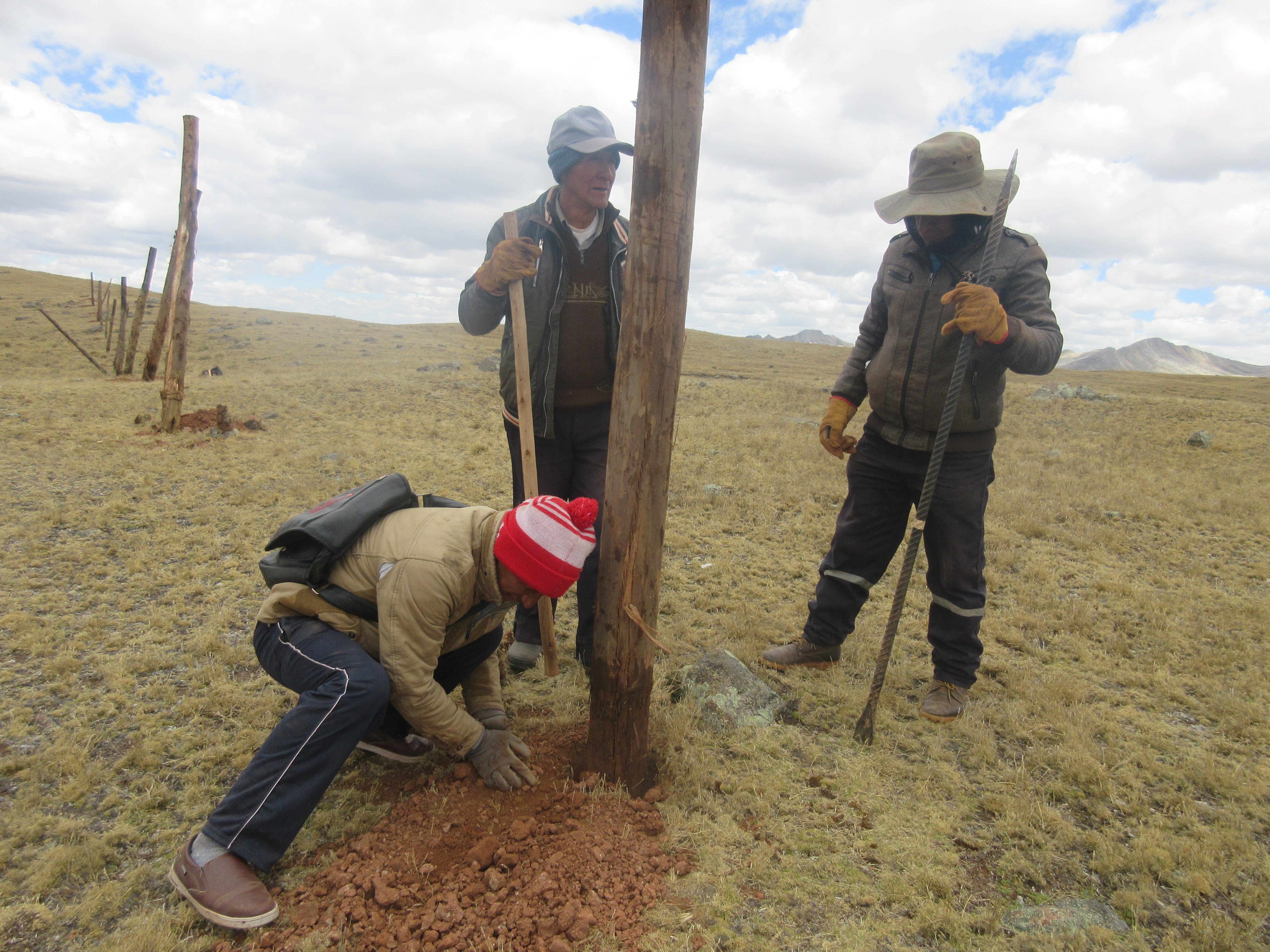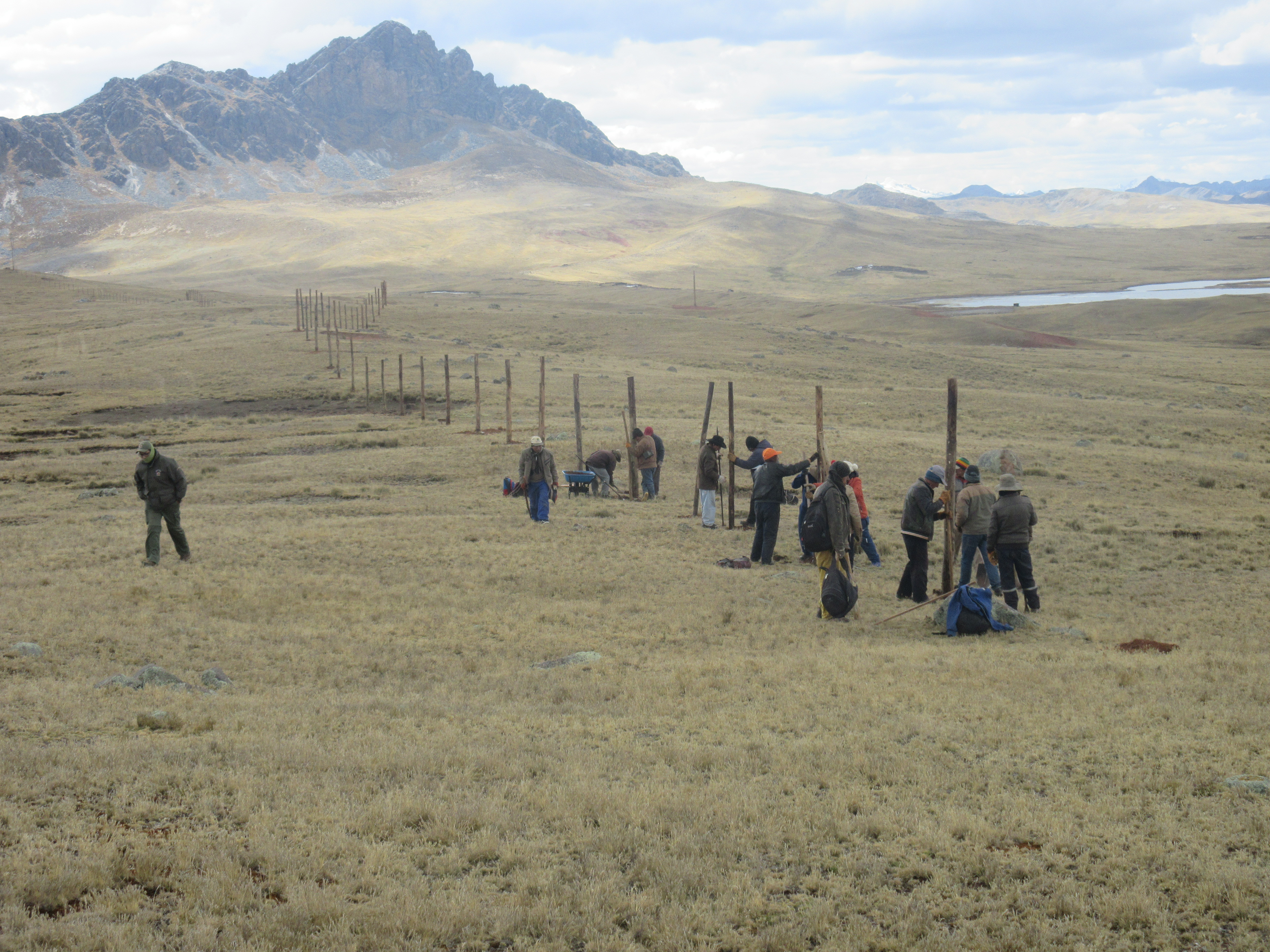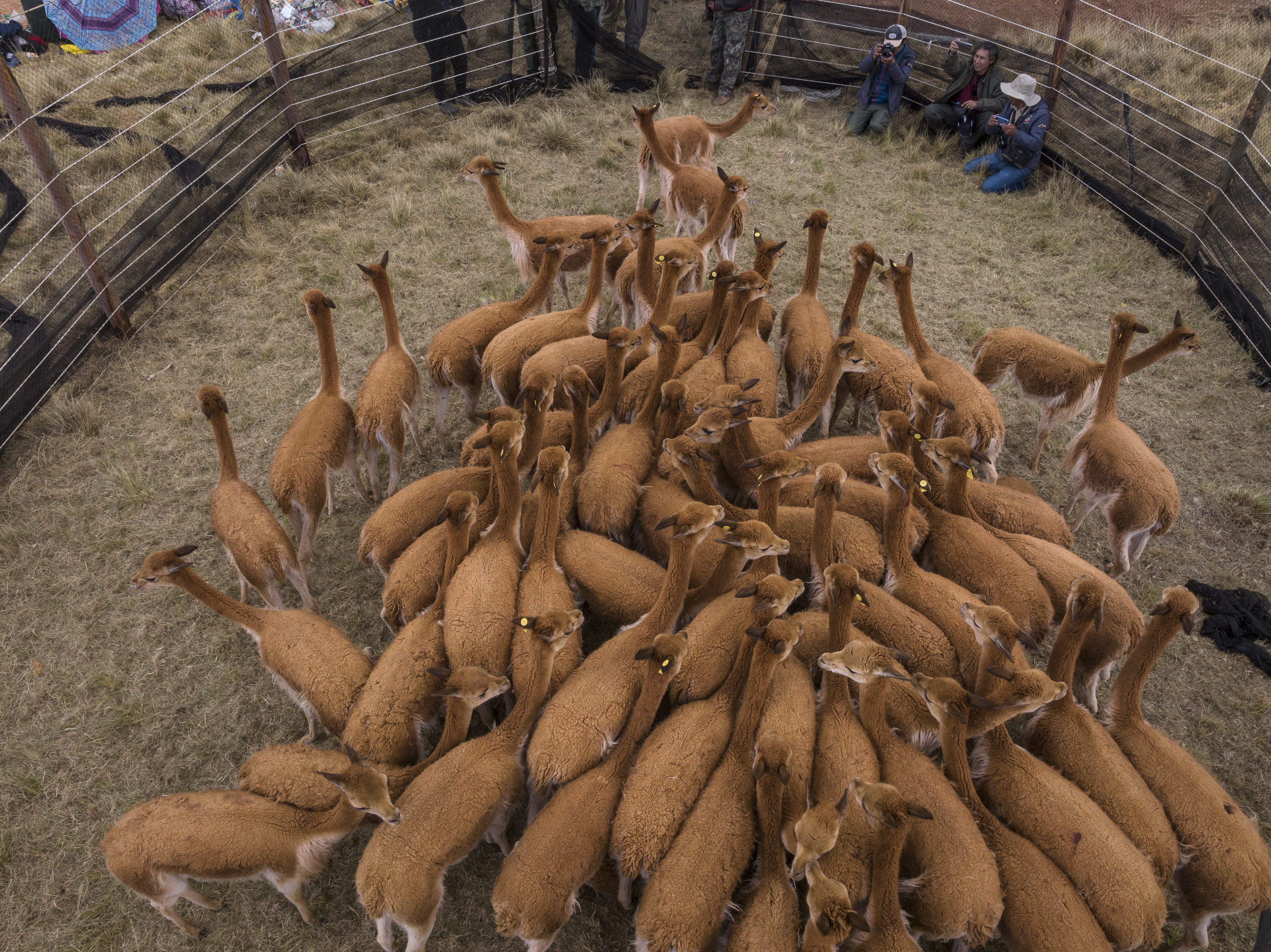



The AbE measure implemented in Tomas includes both green and gray infrastructure. The green infrastructure, which is the ecosystems, is improved by promoting appropriate pasture and vicuña management practices and expanding the sustainably managed area. As for the gray infrastructure, it is the fence itself.
Thus, the improvement of green-gray infrastructure consisted of expanding the fenced area for vicuña management in communal pastures (from 38 to 241 hectares). The process to carry it out began with the diagnosis and design of the AbE measure, which was validated in a community assembly. Subsequently, the area to be fenced was mapped out, the holes were dug and the wooden posts were planted. Finally, the entire fence was painted.
All these actions were carried out through community work, under the leadership of the vicuña committee.
Once the fence was completed and the documentation was in order, the vicuñas were captured and sheared(chaku). At the initiative of the community, the preparation of the chaku included making an offering to the mountain to "ask for permission and a good omen".
More than 200 people participated in the chaku: children, youth, women and men from the community and some outsiders.
- High value of vicuña fiber, demand for the product and existence of markets.
- Ancient practice of chaku and traditional knowledge.
- Commitment from authorities, the Vicuña Committee and all community members.
- The vicuña is a species very well adapted to the conditions of the high Andes and resistant to many of the effects associated with climate variability and change.
- The community has territory that is conducive to the development of this species.
- Need to expand the vicuña enclosure because they were already suffering stress due to insufficient space.
- Participatory design of the AbE measure is key to its success.
- Documenting the capture and shearing process helps to improve the treatment of the fiber and serves as experience for future chakus.
- Maintaining the fence in good condition and replacing deteriorated posts and mesh is necessary to prevent vicuñas from escaping.
- It is recommended that the community organize to control and monitor their vicuñas to avoid loss or theft.
- It is necessary to improve the organization of the chaku, shearing and processing of the fiber, delegating and better organizing the functions within the Vicuña Committee to optimize the quality of the product obtained and reduce losses.